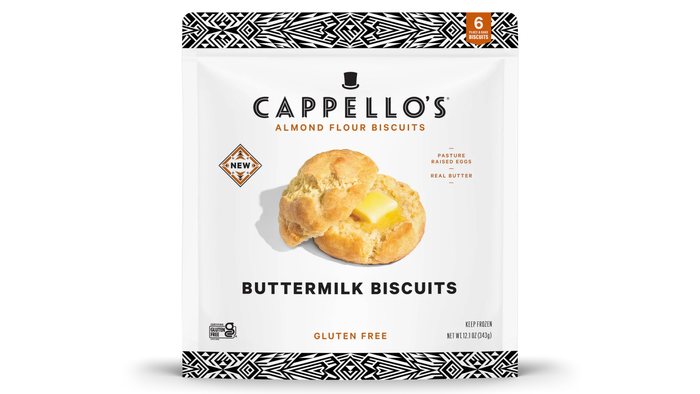Improved taste, nutrition elevate gluten-free foods across the aislesImproved taste, nutrition elevate gluten-free foods across the aisles
Gluten-free products are finally bringing to the table the taste and mouth feel that all consumers can enjoy. Learn more about this growing trend.

Back when the gluten-free movement got its widespread start, about 15 years ago, products targeted people suffering from gluten intolerance, offering them alternatives to traditional wheat pastas and bread mixes. The products worked, in that they did not contain gluten. But quality was no guarantee. Pastas might fall apart while boiling, or turn gluey. Breads could be leaden. Flavors often failed—too off-putting and bold, or too bland. And health benefits didn’t always shine: White rice flour and tapioca flour do not exactly represent paragons of nutritional excellence.
But that was so 2010. After more than a decade of intense R&D for everything from gluten-free pancakes to baguettes, pizza and rigatoni, many products now shine. In some cases, people without any gluten issues prefer certain products for their overall excellence, including flavor, texture and nutrition.
New Hope staffers' sampling of dozens of gluten-free entries for NEXTY Awards demonstrated the dramatic improvement of products that swap out gluten-ingredients for others. So did Expo West itself, where brands down nearly every aisle showcased new, and excellent, gluten-free products.
The evolution of gluten-free from a category solely targeting people suffering from a medical condition to products that work for everybody is not lost on retail buyers. For some of them, gluten-free no longer occupies a small niche. Now, it matters across the store.
“We have at least two or three people on staff who don’t eat gluten, and I also don’t eat it. We are always tasting products to see if they pass muster,” said Emily Kanter, chief executive officer and co-owner of Cambridge Naturals in Massachusetts. “Now, there’s no reason to bring in a low-quality product just because it might check a box. Today’s products are raising the bar for all gluten-free brands, including ones where for many years they were the only game in town. Now they have to do R&D to compete with these new products.”

When the Rummo Pasta decided to explore crafting gluten-free products, after more than 150 years of making wheat pasta from the Italian state of Campania, President Antonio Rummo said the leadership asked, “What do we need? We need texture. Elasticity. Thickness. Pastas when we started down this road in 2015 were too thin. And we needed something that didn’t taste bad—a lot of gluten-free pasta tasted like cardboard.”
After 18 months of intense research and development, Rummo came up with its first gluten-free product, using Italian brown and white rice, and both yellow and white corn. Now, Rummo produces 10 gluten-free pastas (half of which are available in the United States), from rigatoni to spaghetti. Its new rigatoni was a finalist for a NEXTY Award. The company plans to forge ahead with gluten-free artisanship—the products have gained a passionate following.
But making gluten-free pasta is not easy, Rummo said, calling it “a lot” more difficult to manufacture. The ingredients don’t stick together easily, which means producing a compacted dough can be challenging. Instead of just using liquid water in the dough, Rummo began introducing steam, which helped yield a superior product.
“We have seen incredible growth of gluten-free during the past three years in the United States,” Rummo said. “Among the top five items that we sell, two now are always gluten-free. Everywhere we have it, we have incredible demand.”
Italians, he said, are accustomed to incorporating a variety of grains into their diets, including corn and rice, which farmers in the northern parts of the country grow; most wheat production comes from the south. So the idea of consuming a pasta made from different grains doesn’t represent a big roadblock for all Italians.
The products have been such a big hit that Rummo now crafts them in a dedicated production site. The products aren’t just popular in Italy; Rummo said many retailers in the United States carry them, including Whole Foods Market, Kroger stores and more.

With 13 years of experience making gluten-free products, Denver-based Cappello’s stands as a veteran in the industry. It’s pizzas, cookies and pastas have long received praise from gluten rejectors. And now its biscuits are attracting even more attention, including a NEXTY Award at Expo West this year for its new gluten-free buttermilk biscuit.
Co-founder Ben Frohlichstein said the migration of people without gluten sensitivities to gluten-free products is real, and has grown especially pronounced during the past five years. But demand is extremely high for the new biscuit.
“It’s the fastest-growing item in our history. It’s crushing it,” he said. “In the South, the numbers are hard to believe. For us, right now the biscuit blitz is the focus of the brand.”
The product’s high quality even compelled one NEXTY Award judge, Nutrition Business Journal’s Bill Giebler, to say, “This is the best biscuit I’ve ever tasted,” after one bite.
Many of Cappello’s customers do follow gluten-free diets. But as quality rises, the brand’s attraction to everybody else is ramping up, said sales lead Michelle Lishnevsky.
“People are just looking for clean products,” she said. “We are encouraging people to look at the back of the pack. Our products have simple ingredients. People can make them at home if they have the ingredients. That’s what consumers want.”
Jason Murrell, the perishables buyer at Jimbo’s Naturally stores in Southern California, described some of the new gluten-free products landing on their shelves as “amazing.”
The rise of gluten-free seed crackers dense with alternative flours and other whole ingredients, he said, stand as a particular passion.
“They’re outrageously tasty and entirely different from anything I’ve tried,” Murrell said. “And they are very appealing to customers who have no sensitivities at all.”
Learn more about Rummo Pasta on Beacon Discovery, New Hope Network’s new digital discovery platform.
About the Author
You May Also Like





